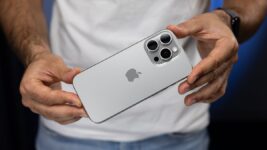
Apple iPhone 16 Pro Review: Boringly great
iPhone 16 Pro Intro
Most importantly, it gets AI… or rather, the promise of AI. A new chipset is optimized for the new Apple Intelligence, but those feature will be rolling over the coming months and even next year. And battery life is also slightly better.
But from a different point of view, the iPhone 16 Pro also looks a lot like the iPhone 15 Pro from last year, down to the colors, and unless you like to pixel peep, those camera improvements probably won’t matter much to most of you. And who notices these faster processors every year anyway?
Whichever way you look at it, though, the iPhone 16 Pro does not seem like a major change. It’s yet another evolution. Yes, it’s still a great phone. A boringly great phone.
Table of Contents:
Also read:
iPhone 16 Pro Specs
First, let’s take a look at the iPhone 16 Pro specs and what has changed from the last two generations:
| iPhone 16 Pro | iPhone 15 Pro | iPhone 14 Pro |
|---|---|---|
| Size and Weight 149.6 x 71.5 x 8.25mm 199 g |
Size and Weight 146.6 x 70.6 x 8.25mm 187 g |
Size and Weight 147.5 x 71.5 x 7.9mm 206 g |
| Screen 6.3-inch OLED 120Hz |
Screen 6.1-inch OLED 120Hz |
Screen 6.1-inch OLED 120Hz |
| Processor Apple A18 Pro New 3nm tech |
Processor Apple A17 Pro 3nm |
Processor Apple A16 Bionic 4nm |
| Configurations 8/128GB for $1,000 8/256GB for $1,100 8/512GB for $1,300 8/1TB for $1,500 |
Configurations 8/128GB 8/256GB 8/512GB 8/1TB |
Configurations 6/128GB 6/256GB 6/512GB 6/1TB |
| Cameras 48MP main 48MP ultra-wide 12MP 5X zoom 12MP front |
Cameras 48MP main 12MP ultra-wide 12MP 3X zoom 12MP front |
Cameras 48MP main 12MP ultra-wide 12MP 3X zoom 12MP front |
| Battery 3,577 mAh *rumored +9.2% vs 15 Pro 27 hours of video playback |
Battery 3,274 mAh 23 hours of video playback |
Battery 3,200 mAh 23 hours of video playback |
| Charging 20W wired 25W MagSafe |
Charging 20W wired 15W MagSafe |
Charging 20W wired 15W MagSafe |
iPhone 16 Pro Design and Display
New Camera Control and slightly larger body
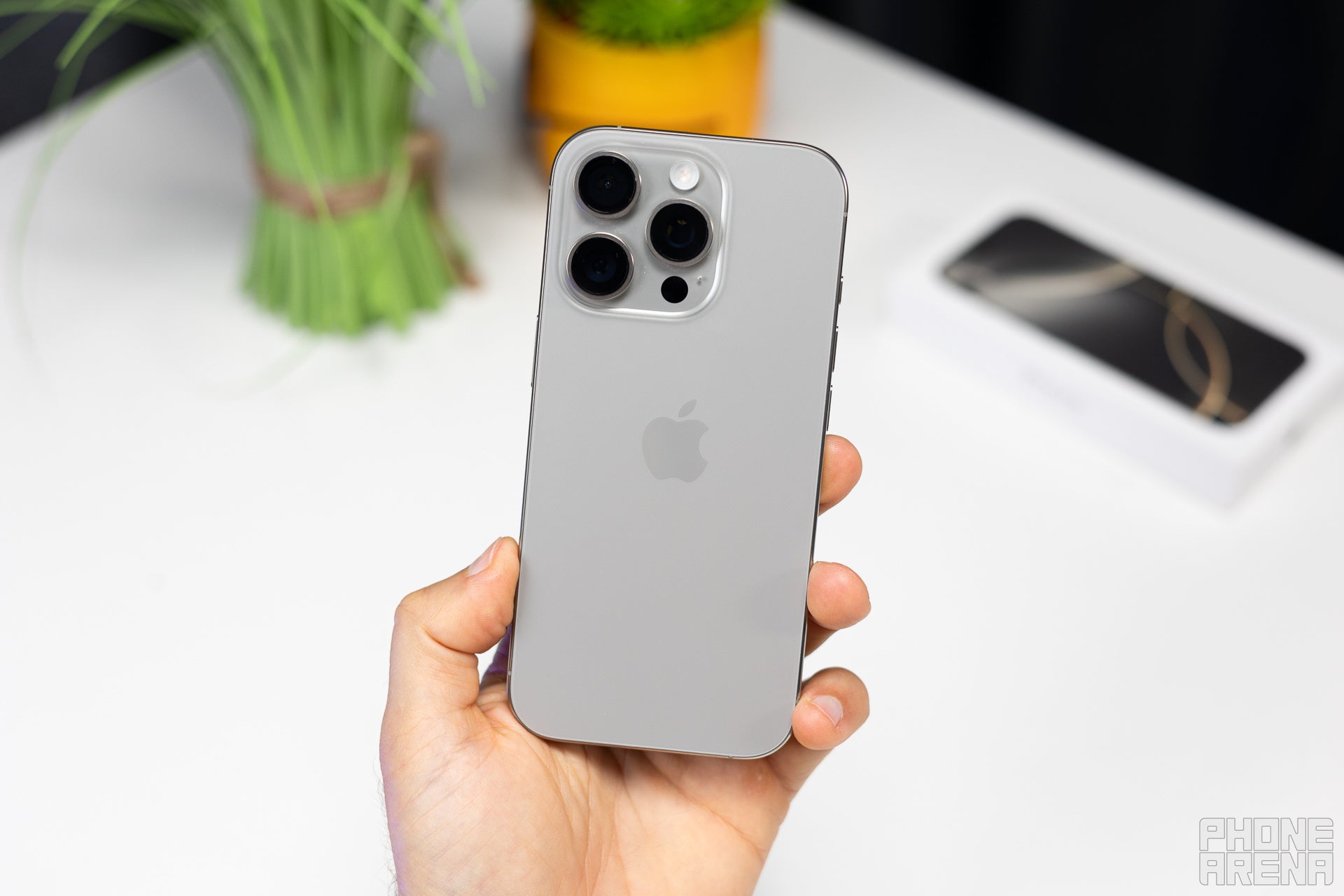

Bigger size, similar looks (Image by PhoneArena)
The iPhone 16 Pro sticks with the familiar iPhone design language of the past few years with flat sides and a camera island in the upper left corner.
You get a larger 6.3-inch screen, but don’t expect this to be a major change and we actually barely noticed it when switching from the 15 Pro.
This slight change on the 16 Pro, however, is one in the right direction. People are more dependent on their phones and more screen space translates to an improved user experience. Simple as that.
In terms of materials, we have the same titanium frame as last year with an improved Ceramic Shield on the front. Apple claims the 16 Pro is 2X more durable against drops, but keep in mind that this does not refer to scratches and we got some in just a few days of use (just like on previous iPhones).
For all the rest, you still have IP68 water and dust protection rating, as well as a USB-C port for charging (with USB 3 speeds).
New is the Camera Control button, placed below the power key. We have mixed feelings about it. As a shutter button to quickly start the camera, it’s a nice little convenience. But not really more than that.
It also kind of acts like a miniature trackpad and you can swipe and tap on it to zoom in and out or change other settings. We were very curious about this, but after using these functions for a while, we are left with a feeling that Apple kind of over-engineered this. It just seems easier to precisely zoom in and out using the much larger screen on the phone rather than fiddling with this tiny Camera Control button. The default settings also activate it way too easily, so we recommend going into Settings > Accessibility > Camera Control, and disable the “Show Adjustments” feature. This way, you disable the trackpad-like functionality and also the frustration of accidentally zooming in just because your finger got in the way.
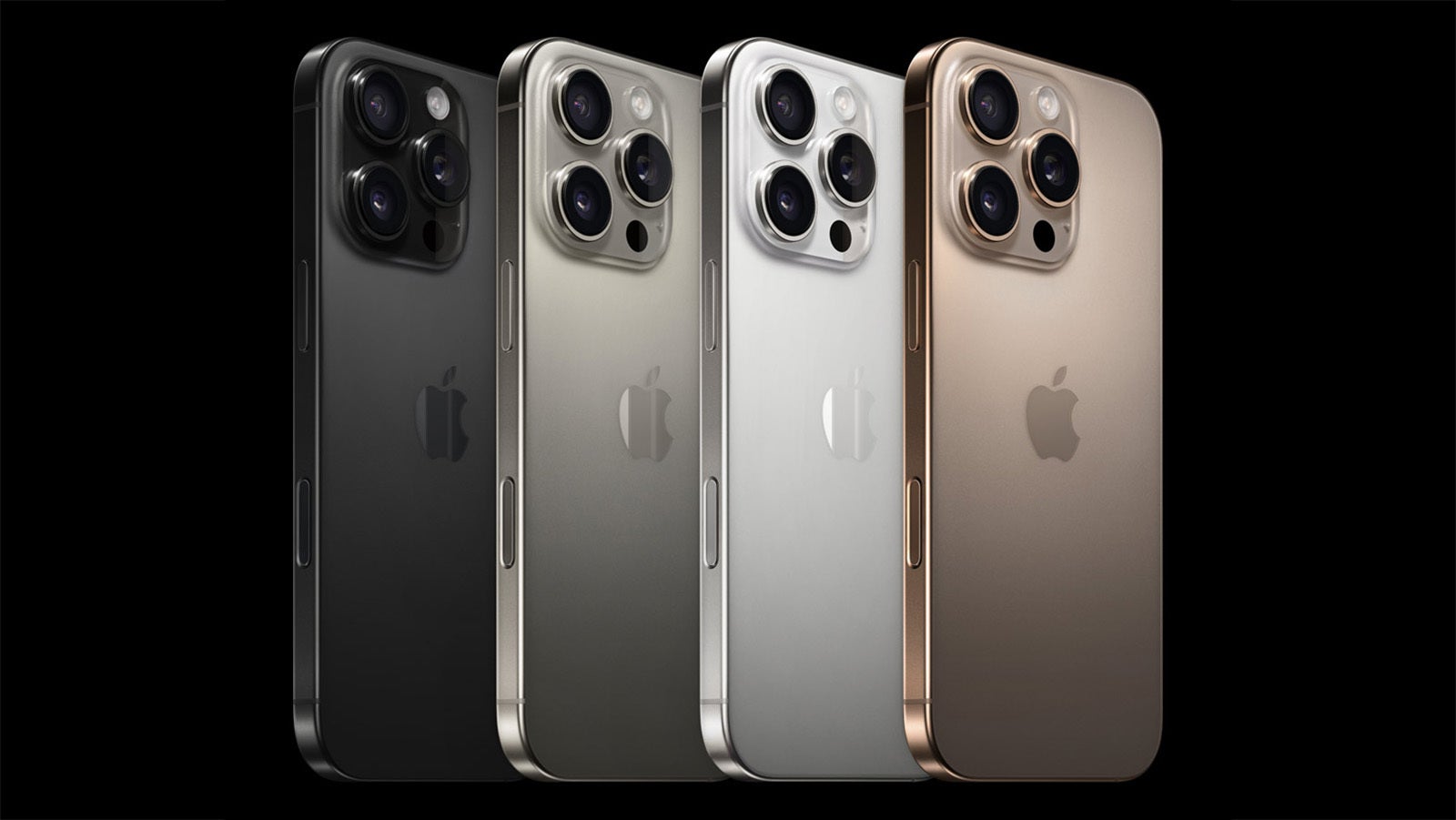

The four new iPhone 16 Pro colors
- Desert Titanium (gold-ish color)
- Natural Titanium (gray)
- White Titanium
- Black Titanium
The 16 Pro is also coming in a slimmer box this year, made entirely of recycled materials. This is cool, but what is not cool is that there are still no accessories in the box, so you have to buy everything (charger, screen protector, case) separately.
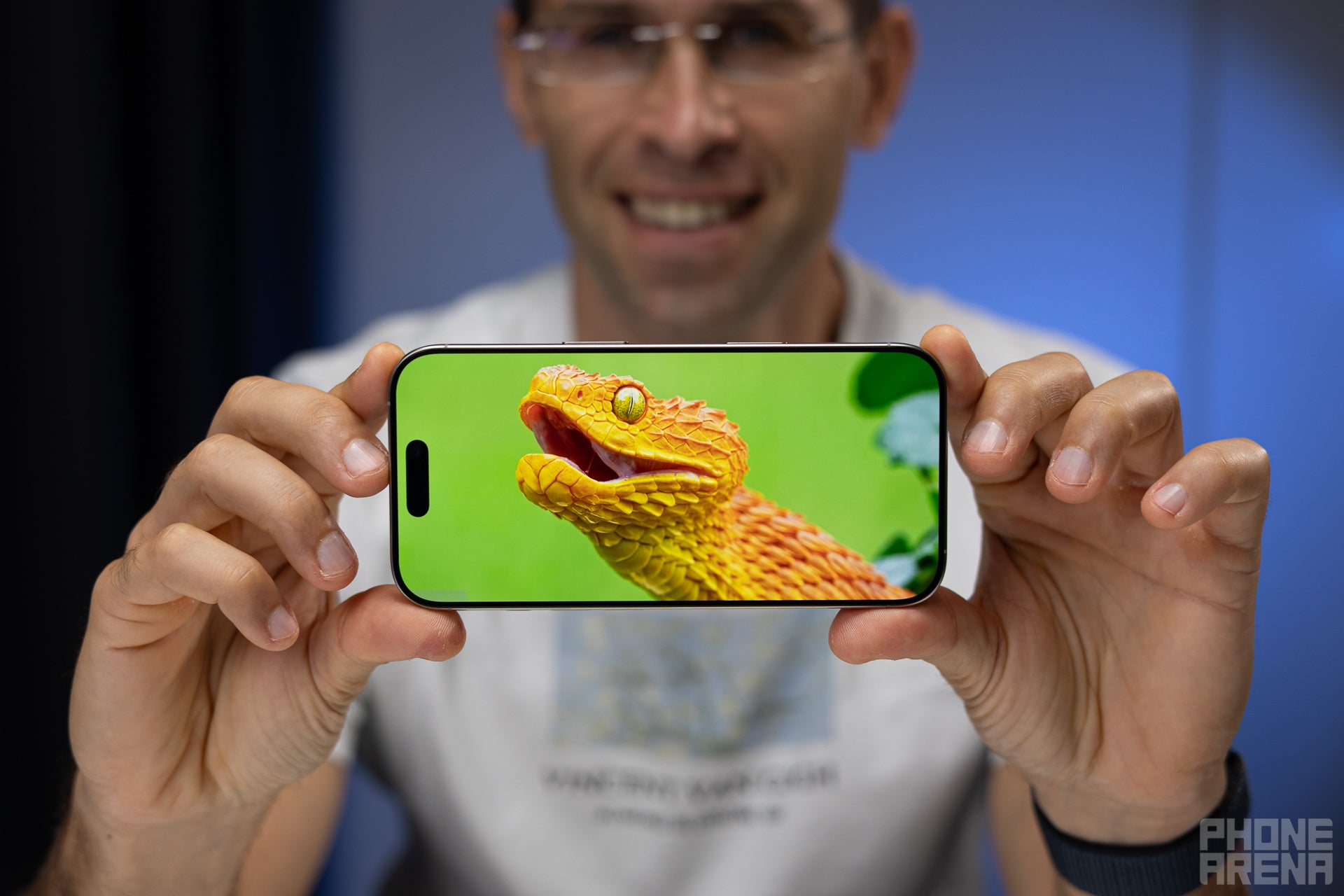

Much slimmer borders around the screen (Image by PhoneArena)
And what about that new 6.3-inch screen? We mentioned the size bump (6.3″ vs 6.1″ before), and the slimmer borders around the screen, but there is one more upgrade.
The minimum brightness can now drop to just 1 nit, which is much easier on the eyes if you use your phone in bed at night. This sounds like a small feature, but we have been begging Apple to do this for years, so we’re glad it’s finally here. And yes, Samsung Galaxy phones have had this one for a while, so Apple is catching up here.
There are also no changes to the Dynamic Island, which still hosts the familiar Face ID system.
iPhone 16 Pro Camera
A new ultrawide camera and longer, 5X zoom
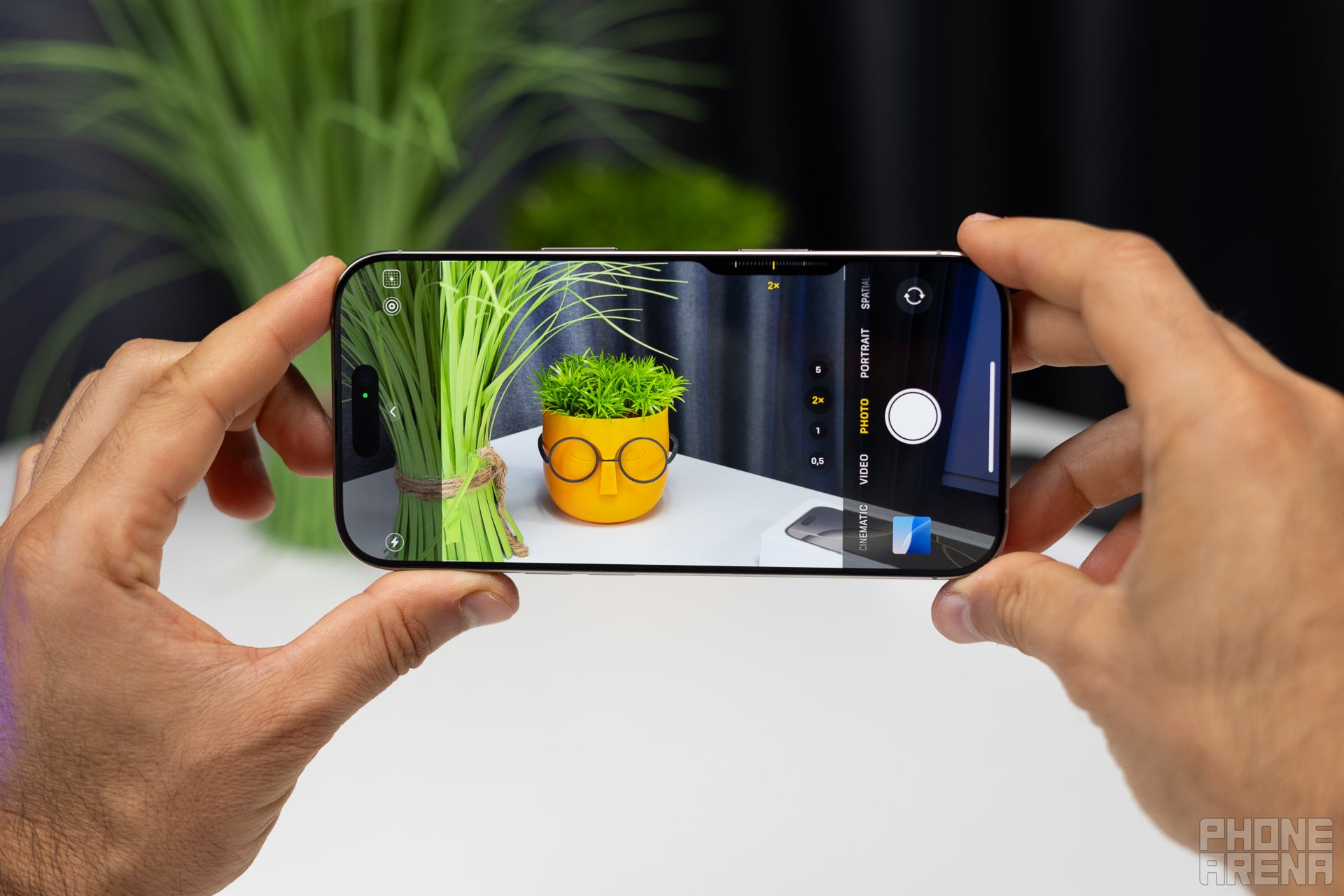

The 16 Pro swaps the 3X zoom camera for longer, 5X zoom (Image by PhoneArena)
The camera system is getting some noticeable improvements in the 16 Pro, but one new software feature might actually be the show-stopper this year.
First, you still have three cameras on the back, and second, the 16 Pro still has all the cool ProRAW and ProRES features (you don’t get these on the regular 16 model).
The main camera is mostly the same 48MP one as on the 15 Pro. Same 24mm lens, same quick presets for 28mm and 35mm crops, same 2X sensor crop feature. And also same 24MP photos by default (you can opt for 12MP if you want even smaller file sizes, or 48MP for more detail at the expense of size).
On our PhoneArena Camera Score, the iPhone 16 Pro scores nearly identical to the previous generation in both detail and colors. There are some differences, but they are negligible. It mostly scores better for longer range zoom, where that 5X camera helps, but loses in that shorter zoom range where the older 3X lens was useful.
iPhone 16 Pro Camera Samples
Looking at the images, you see the familiar “iPhone look” to images.
What does that mean? Well, you get a bit more vibrant colors and a bit of oversharpening, which differentiate these photos from what images from a real camera look like.
New Ultra-wide camera
New are the ultra-wide and zoom cameras. The ultra-wide gets a bigger, 48MP sensor. This allows for pixel binning, aka combining four pixels into one for better light senstivity and ultimately, better low-light photos.
It can definitely capture more light and that is especially noticeable for night shots. In the above crop from an image, you can see how there is less noise on the 16 Pro and more resolved detail. That, however, is only noticeable at night, and during the day the level of detail is identical.
New 5X zoom camera
The telephoto camera gets a bump from 3X zoom to the 5X zoom tetraprism lens from the Pro Max. This gives you more reach, but you lose on a very useful 72mm lens for portraits. Trade-offs!
In the above image, you see a crop at 10X zoom and at that level, the amount of detail is definitely better with the new Tetraprism camera compared to the same photo captured on the 14 Pro Max, which only has a 3X zoom camera.
However, Apple has a new software feature that is bigger news than you might think. It’s the new generation Photographic Styles.
Photographic Styles are like filters on steroids and also, built deep into the system.
New Photographic Styles
With this new generation, they are way more powerful and useful. Previously, you had to select a style and you could not change the style of the image after you capture it. Now, you can do that, which opens lots more possibilities.
The styles themselves are divided into two groups: “Undertones” which change the tint of your photo to Amber, Gold, Rose Gold, Neutral, or Cool Rose, or “Mood” styles which are like little recipes with preset shadows and saturation values.
These might be a bit overwhelming, so let us explain. You control the Styles by moving a dot on an X,Y axis, which is a dotted square. Moving up lights up the shadows and moving down brings deeper shadows (that’s what you want to do!). Moving left gives you less saturated colors and moving right gives you more saturated colors. You also have a “palette” slider in the bottom, where you arrange the color range.
So why should you care about these new Photographic Styles? One reason: shadows. iPhone photos in the past few years default to a particular style with bright shadows and a specific… “flat” look. There is just not enough contrast in these images. The default style on the iPhone 16 Pro is even further into that territory.
But now you have a solution: the tone control (moving down on the Photographic Style square). It brings shadows down and you get a beautiful, contrasty picture. If that’s all you wanted, that means you can have a great-looking picture right out the gate and never worry about shooting RAW or editing your images later on. Cool!
Video Quality
On the video side, we have one new feature: 4K120 slow motion. This is much crisper than the current 1080p120, and really cool to play around with. Come to think about this, even many professional cameras don’t support slow motion beyond 1080p.
We also love the new Audio Mix video editing feature. You have three presets in addition to the standard one: In-frame, Studio and Cinematic, which help you isolate your voice and kill distracting noises. The Studio one is particularly great for… well, studio indoor recordings as it removes all the echo. If you want to start posting talking head videos, with this feature you can kind of do it without having to purchase a separate mic and still get decent (*not great) audio.
For all else, though, we did not notice much of a difference in quality. Apple mentions a new “lens reflection coating”, and we were hoping that might resolve the issue with tiny light reflections in low-light iPhone videos, but unfortunately it does not make much of a difference at all.
iPhone 16 Pro Performance & Benchmarks
A new chip with a focus on AI
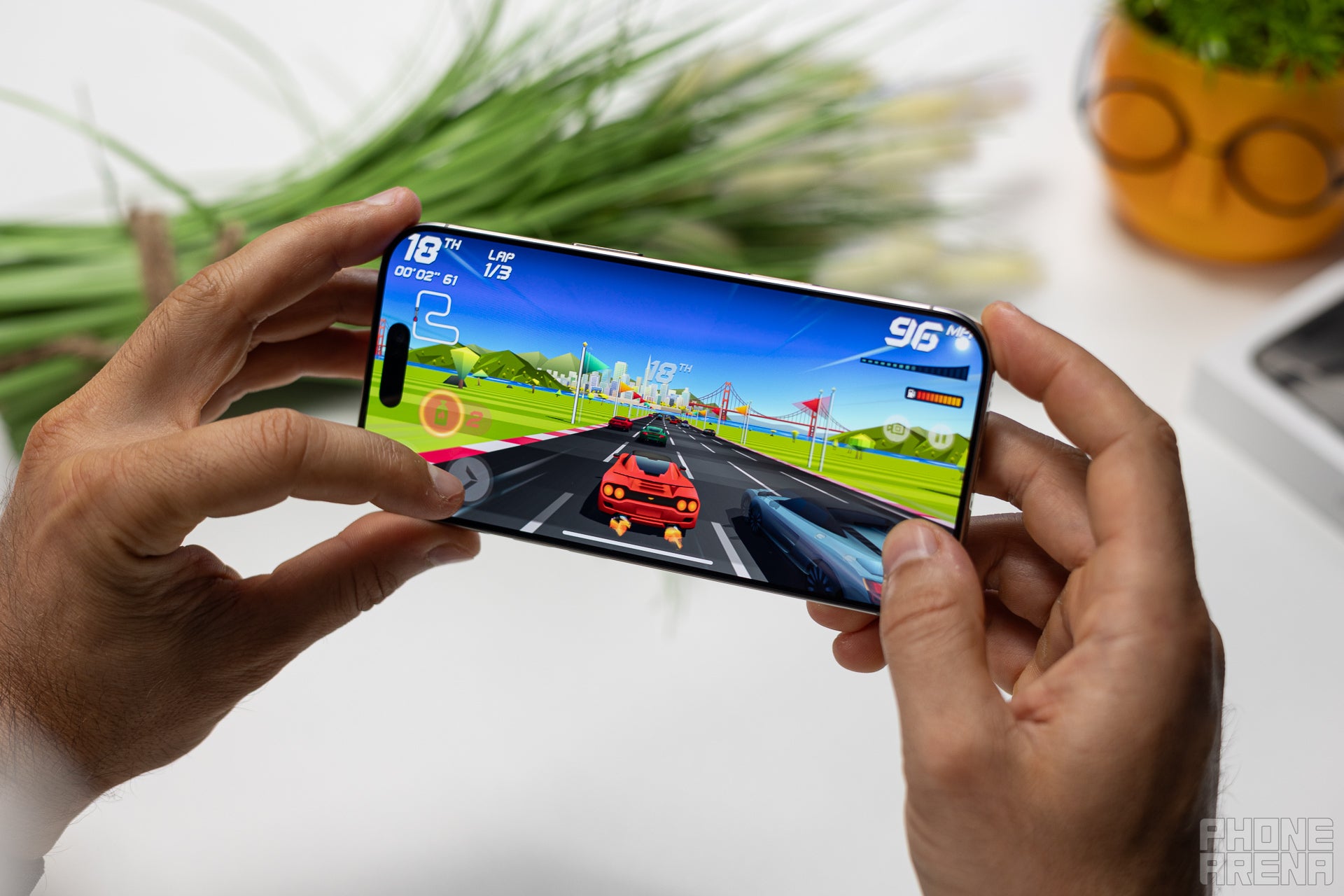

A18 Pro is not just about power, but also efficiency (Image by PhoneArena)
The 16 Pro is also getting a new Apple A18 Pro chipset, built on second-gen 3nm technology by leading manufacturer TSMC.
And this is good news because the 15 Pro was built on the first generation of that tech, and did not quite reap the full benefits, so we hope for some meaningful gains in performance this year.
Overall, this chip delivers around 20% faster speeds and a better efficiency.
However, the big story is about AI and how this phone is built around it. With an upgraded Neural Engine, AI tasks will be faster on the 16 Pro, but in terms of RAM we expect it to have the same 8GB RAM as the 15 Pro.
Unfortunately, therer are no changes to the storage situation, so that means a base iPhone 16 Pro model still comes with 128GB on-board memory. We would have loved Apple to bump this to 256GB, instead of asking users to pay a $100 premium for that storage upgrade.
But hey, at least prices remain the same.
iPhone 16 Pro Software
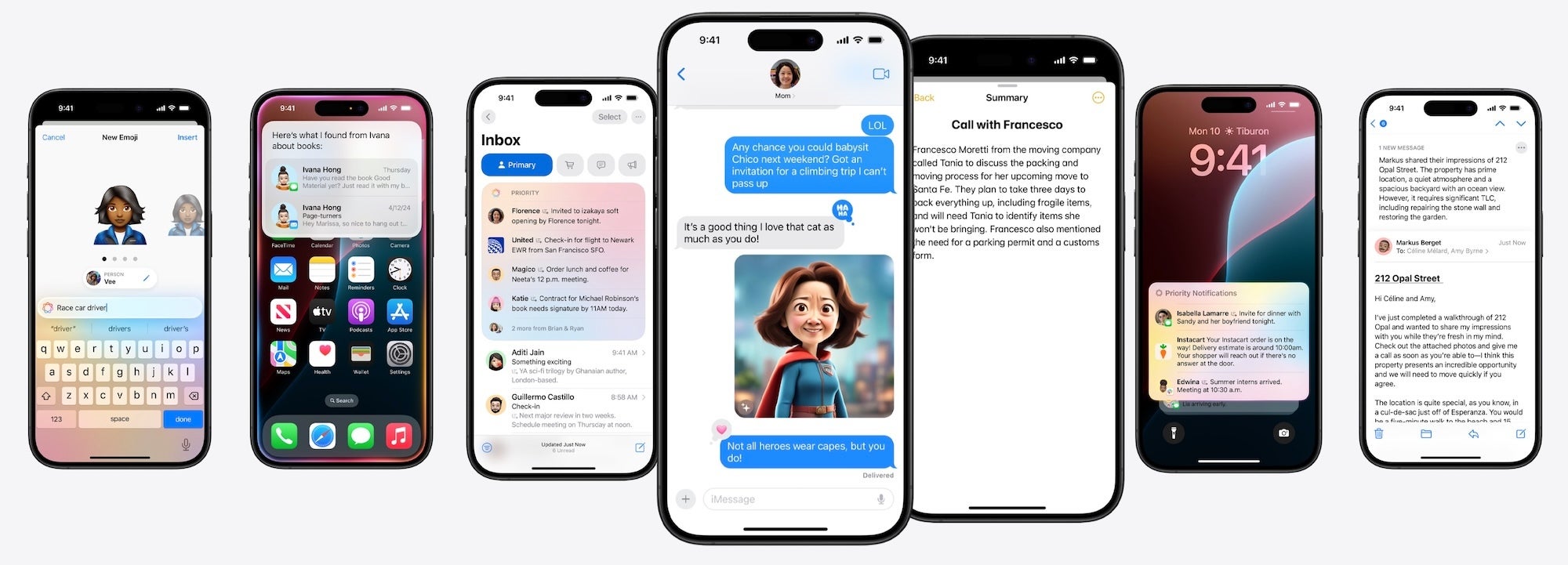

Previously, word on the street was that saying the magic word AI three times summoned a Google Pixel phone in front of you, but now that seems to be an iPhone.
The iPhone 16 Pro is laser focused on new AI functionality, and this will be super important as the iPhone 14 Pro series and older models don’t support AI. Apple, of course, wants those owners of older models to upgrade and AI is the big reason why.
The iPhone 16 series launches with iOS 18, but the first major AI features arrive with iOS 18.1 a few weeks later (probably in October).
However, the AI features that really make a difference are coming even later. The ChatGPT integration, for example, is scheduled to arrive by the end of the year, and the fully revamped Siri might come next year.
iPhone 16 Pro Battery
Bigger battery, faster charging
The bigger size of the 16 Pro has one big benefit – you can stick a bigger battery inside.
Just how big? The 16 Pro comes with a 3582 mAh battery, a nearly 10% increase over the 3,274 mAh battery capacity on the 15 Pro.
Apple rates the 16 Pro for 27 hours of video playback, up from 23 hours on the 15 Pro model, and audio playback is rated for 85 hours, up from 75 hours previously.
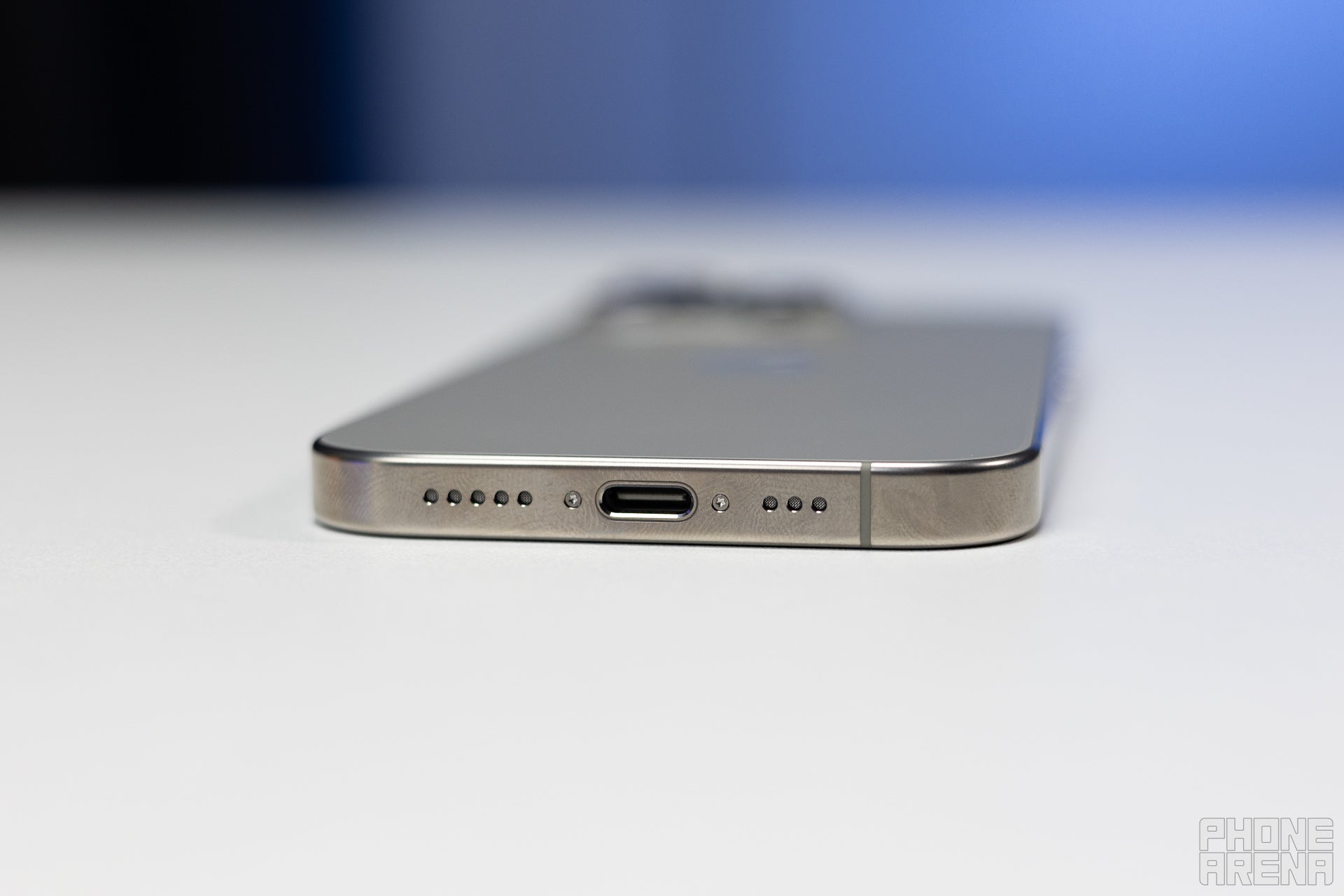

Despite some reports, wired charging is not faster on the 16 Pro, but MagSafe wireless charging is (Image by PhoneArena)
We had to verify those numbers ourselves, so we put the iPhone 16 Pro to our extensive PhoneArena Battery Score testing protocol.
Here are the battery life numbers we got.
PhoneArena Battery and Charging Test Results:
Charging is also faster, but only in one certain way.
We were all hoping for faster wired charging, but that actually remains the same at 20W speeds.
Summary
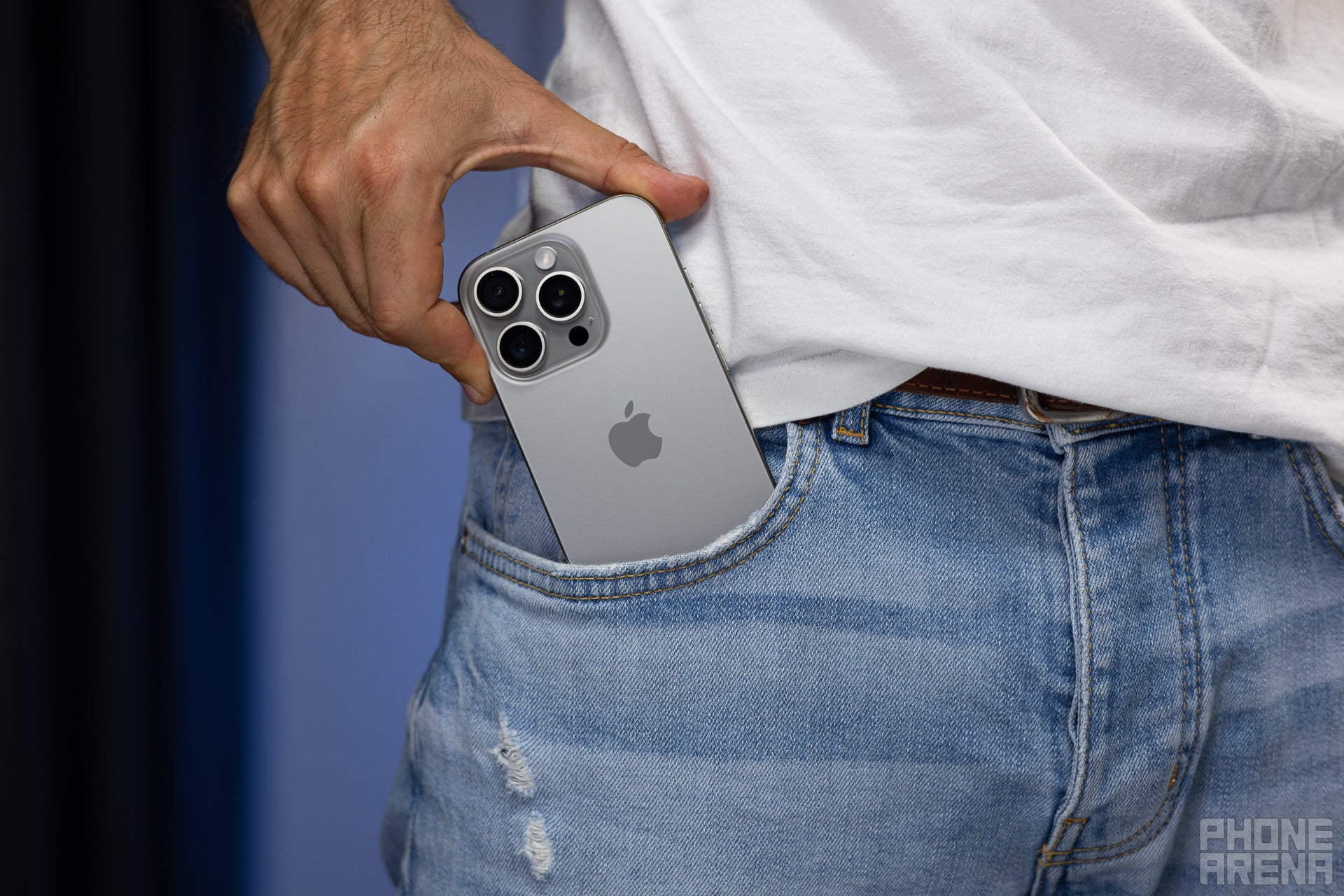

iPhone 16 Pro is about three things – longer battery life, 5X zoom camera and the upcoming Apple Intelligence (Image by PhoneArena)
With the slight tweaks to screen size and battery life, the iPhone 16 Pro is a better phone than previous Pros. But slightly so. The changes in camera quality are there, but they are subtle, and it’s the Photographic Style feature that might prove the most important one for the way your pictures look rather than any new camera.
The faster processor only seems to matter for the most demanding gaming tasks and fast capture of ProRAW files, but we doubt you would notice the speed-up in daily use.
And the Camera Control button might be one of the more over-hyped features around, especially when it comes to its trackpad-like features.
And most importantly, the iPhone 16 Pro is just not a complete phone yet without all the Apple Intelligence feature coming later in 2024, and some even in 2025. Let’s also not forget that the iPhone 15 Pro is getting those features.
So should you upgrade? The iPhone 16 Pro feels a bit like an “S” year, so you probably don’t need to upgrade, but if you are just looking for refinement – then, yes.



